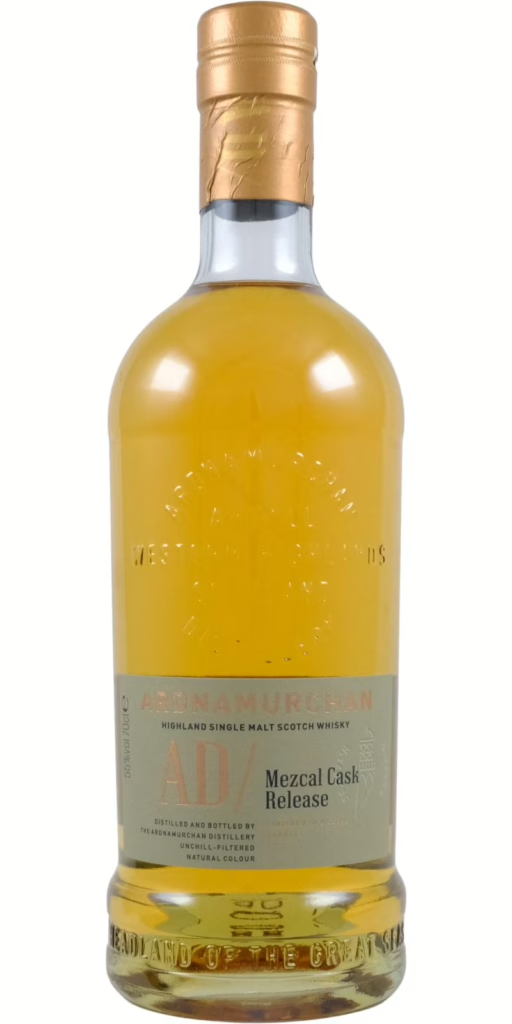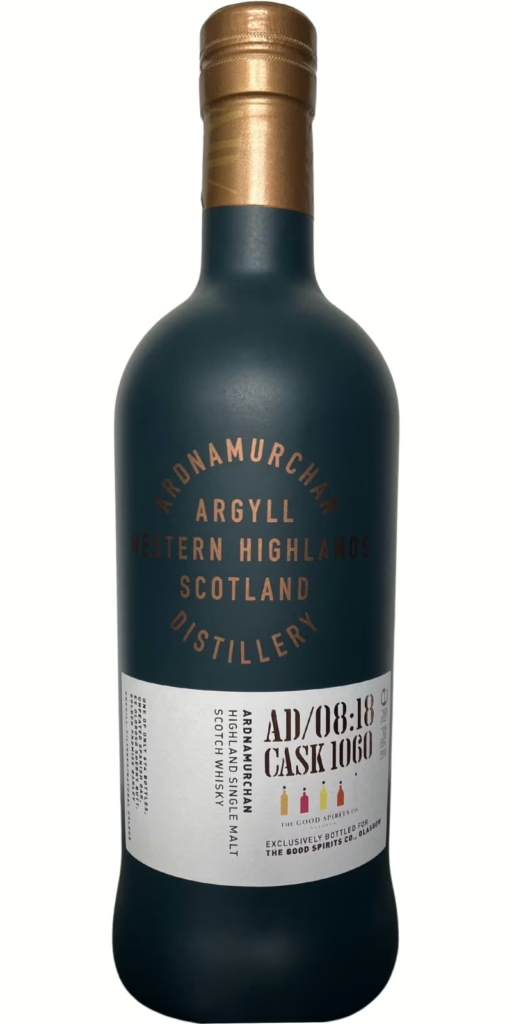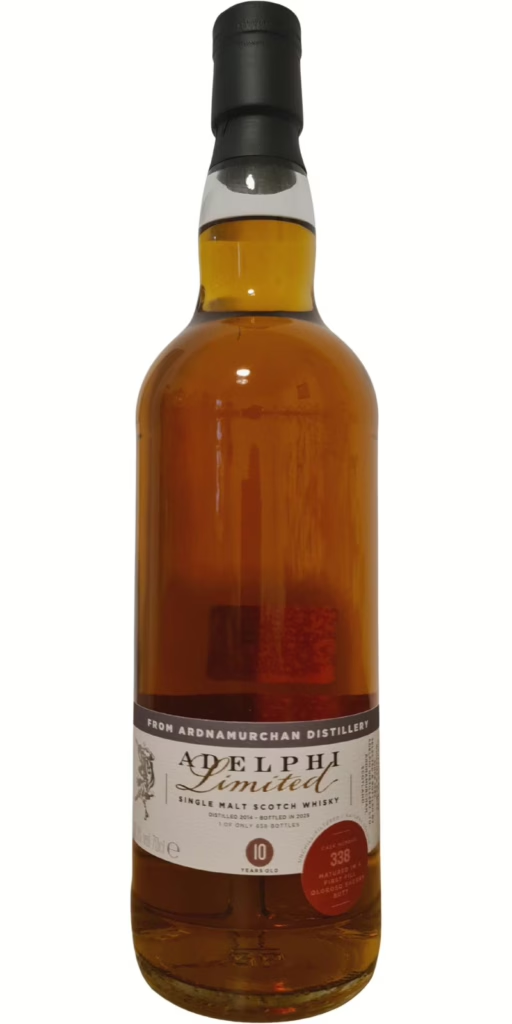Returning to the young Ardnamurchan distillery – unintentionally continuing a theme of young distilleries on More Drams, following Strathearn and Ardnahoe this week – we explore another pair… in fact, let’s make that even a trio of whiskies. Today, we compare two official bottlings, including a single cask, with a semi-independent one, given that Adelphi, the independent bottler, owns Ardnamurchan distillery. We’ll discuss the trend of independent bottlers starting to distil as well before we dive into the Ardnamurchan AD/ Mezcal Cask Release and the Single Casks 08:18 #1060 and #338 Adelphi.
Independent Bottlers: From Bottling to Distilling?
Over the past two decades, a significant trend has emerged in the whisky world: independent bottlers are increasingly moving from simply sourcing and bottling casks to owning or building their own distilleries. This shift marks a new chapter for companies that have traditionally relied on purchasing casks from established distilleries, giving them greater creative control and long-term stability in a competitive market.
Why do independent bottlers become distillers? There are several key motivations behind this move:
First, supply security is a major driver. Independent bottlers traditionally source casks from existing distilleries, but as demand for whisky has surged globally, securing high-quality casks has become more challenging and costly. By owning or building their own distilleries, bottlers gain direct control over production and stock, ensuring a reliable supply of spirit for future releases without relying on third-party availability or market fluctuations. Furthermore, some distilleries have become reluctant to sell casks, even though they were more open before, and some long-standing contracts might have not been renewed, and independent bottlers rely on whisky made by others.
Second, creative control and product differentiation are key motivations. Independent bottlers are known for offering unique single-cask and cask-strength whiskies that showcase individuality and diversity beyond standard distillery releases. However, sourcing limits their ability to innovate fully. Producing their own whisky allows them to experiment with barley type, fermentation, distillation techniques, and maturation regimes, crafting distinctive flavour profiles that align precisely with their brand vision and appeal to drinkers and amateurs seeking originality.
Third, owning production facilities strengthens brand identity and market presence. Having their own distillery elevates a bottler from being a curator of other distilleries’ spirits to a creator of proprietary expressions. This enhances credibility, storytelling, and consumer engagement. It also opens opportunities to expand into new markets and product categories, such as limited editions and craft spirits, which can command premium prices and foster loyalty.
In summary, independent bottlers start producing their own whisky to secure supply chains, gain full creative freedom, and build stronger, more distinctive brands that can thrive amid growing competition and evolving consumer tastes in the whisky industry.
And Adelphi is not the only independent bottler having made this move, as other notable independent bottlers who have made the leap include:
- Gordon & MacPhail: While long established as a bottler, they acquired Benromach Distillery in 1993, reviving it and releasing acclaimed single malts under their stewardship. More recently, they built The Cairn distillery and, as their whisky matures, released a range of blended malts supposed to show what they expect to release over the next many decades.
- Signatory Vintage: Known for their curated independent releases, they purchased Edradour Distillery in 2002, allowing them to produce their own single malt alongside their independent bottlings.
- Elixir Distillers: Founded in 2017 (but known before, since 1999, as Specialty Drinks), Elixir Distillers recently began building their own distillery on Islay, Portintruan, and bought Tormore from Pernod Ricard.
- Douglas Laing: As we saw a couple of days ago, they bought the young Strathearn distillery back in 2019, and their name appear on the Strathearn bottlings.
- Hunter Laing: they founded Ardnahoe distillery in 2019, located on Islay between Caol Ila and Bunnahabhain, and their first whiskies are also available, as we also saw on these pages.
- Wemyss Malts: the Wemyss family also built the Kingsbarn distillery in 2014, in the Lowlands, with local Fife barley being used for whisky production.
- Thompson Brothers: the Dornoch based independent bottlers already launched Dornoch Distillery a few years ago and are now planning to build Struie distillery, a bigger sister distillery.
And some independent companies sometimes own independent bottlers and distilleries at the same time, for instance J. A. Mitchell owning the indy bottler Wm Cadenhead, and the Springbank and Glengyle distilleries.
This trend is reshaping the whisky landscape. Independent bottlers-turned-distillers bring fresh perspectives, often prioritising quality, transparency, and innovation over mass production. Their distilleries become laboratories for experimentation, producing limited releases that excite collectors and connoisseurs alike.
The move from independent bottling to distilling is driven by the desire for creative freedom, control over supply, and a deeper connection with consumers. As more bottlers invest in their own production facilities, whisky lovers can look forward to an even greater diversity of styles and stories, enriching the global whisky scene.
Ardnamurchan AD/Mezcal Cask Release (2025) Review
We begin with the official bottling: the Ardnamurchan AD/Mezcal Cask Release. A mezcal cask may not seem like a traditional choice for whisky, but as we discussed a few months ago with the Defilement 26-year-old Maple Syrup Cask Finish, the SWA still permits the use of tequila and mezcal casks. It certainly helps that some of the larger whisky and spirits groups also own mezcal producers. This Ardnamurchan expression uses distillate from 2017, initially matured in ex-bourbon casks and then finished in ex-mezcal casks. The 2025 release comprises 4,968 bottles, filled at 55% ABV, without chill filtration or added colouring. You can find it for €65 in Europe and £72 in the UK.

Colour:
Pale gold.
Nose:
Neat: The mezcal influence immediately stands out with a lightly smoky and earthy agave note. The nose presents an intense array of aromas, including lemongrass, olive oil, syrup, and fruits such as kiwi and apple, alongside marzipan and mint ice cream.
With water: Reduction brings forth a more mineral character, evoking pebbles and earthy soil, while the smokiness subtly fades.
Palate:
Neat: The palate offers a smokier profile than the nose suggests. A strong arrival introduces earthy, grassy, and smoky mezcal notes, accompanied by light salinity, lemon, chilli pepper, oak, and a touch of tannic bitterness. The palate then develops a mineral quality, with wet pebbles and granite, and a thick, slightly chalky mouthfeel.
With water: Reduction enhances the minerality and introduces more herbal notes, along with a drier and sharper smoke, while the fruity elements remain subdued.
Finish:
The finish prominently features bitterness, with hints of mint chocolate (reminiscent of After Eight) and smouldering wood coal.
Comments:
This Ardnamurchan AD/ Mezcal Cask Release could benefit from a touch more fruitiness, but the mezcal influence integrates seamlessly with Ardnamurchan’s spirit. While the herbal bitterness may not appeal to everyone, this particular Ardnamurchan exudes an alluring character that works well.
Rating: 6.5/10
Ardnamurchan AD 08:18 Cask #1060 for Good Spirits Co. (2024) Review
Next up is a 2018 Ardnamurchan single cask, exclusively bottled for the Glasgow-based online retailer Good Spirits Co. Distilled from Golden Promise barley in 2018 and bottled in 2024, this expression matured for five years in a single Oloroso sherry butt, cask number 1060. The cask produced 674 bottles, bottled at cask strength (58.9% ABV), without chill filtration or added colouring. As far as I know, this release has sold out.

Colour:
Tawny.
Nose:
Neat: The nose reveals a prominent sherry influence, yet it remains brighter than a classic Oloroso-matured whisky. Aromas of medium-strong spearmint, cherry liqueur, homemade strawberry jam, a hint of cinnamon, and dried figs emerge.
With water: The nose transforms to offer meringue lemon pie and subtle hints of grape juice.
Palate:
Neat: The palate delivers an intense arrival, with a strong peppermint flavour and a burst of spices, all supported by a thick mouthfeel. Notes of woody bitterness and dentist moulding paste appear, alongside tart orange and lemon notes. Reminiscent of Arlequin sweets, it presents a chemical and tangy banana flavour, complemented by spices such as clove and cinnamon, and a touch of dark caramel.
With water: The palate becomes even more enjoyable, revealing additional fruity notes, almost tropical in character, with a touch of funk. The lovely peppermint persists, accompanied by a sweet, grassy undertone.
Finish:
The finish proves peppery, hot, and long, with recurring mint notes, Spanish oak wood tannins, dark chocolate, and a hint of lemon juice and peel.
Comments:
This young, unpeated Ardnamurchan 08:18 single cask 1060, bottled for Good Spirits Co., makes a lovely whisky with its thick, oily mouthfeel and abundance of flavour and intensity. Adding water softens it slightly, allowing more flavours to emerge and letting this Ardnamurchan truly shine. It’s an excellent whisky, though unfortunately sold out. Many thanks to Ainsley for the sample!
Rating: 7/10
Ardnamurchan 2014 Single Cask 338 Adelphi (2025) Review
Next, we explore a 2014 Ardnamurchan single cask, number 338, bottled by Adelphi, who, as I said, own Ardnamurchan. Does this classify as a semi-official bottling or does it remain an independent one? Regardless, this single cask, matured in a first-fill Oloroso sherry butt, saw an outturn in 2025 with a 10-year age statement, producing 658 bottles at 57.1% ABV, without chill filtration or added colouring. It remains available in Europe for €120.

Colour:
Burnished.
Nose:
Neat: The nose presents some intensity, with a clear Oloroso influence. Figs and dates, cinnamon, orange marmalade, marzipan and hazelnuts, dark cherries.
With water: The nose becomes a bit subdued, with once again mostly the oloroso speaking, or should I say, whispering.
Palate:
Neat: Once again, clearly the sherry cask had a big influence on the spirit. Menthol, cinnamon, toffee, figs and black berries, dark chocolate and wood, bitter orange marmalade and some eucalyptus.
With water: More After-Eight chocolate, raspberries and cherries, with a creamy mouthfeel. Some pepper also appears, bringing some kick to the palate.
Finish:
The menthol and eucalyptus linger as well as the berries and some chocolatey woodiness. Medium length.
Comments:
This is good but, despite this Ardnamurchan 10-year-old single cask 338 from Adelphi not being a sherry bomb, the first-fill oloroso sherry butt still overtook the distillate, and all I can taste is the sherry cask. It’s good, but I was expecting more from it.
Rating: 6/10
Bottle pictures courtesy of Whiskybase. Thanks Ainsley for the cask 1060 sample!
But Don’t Trust Our Word For It…
If you want another take on these Ardnamurchan, the chaps at Dramface also reviewed the Mezcal Cask Release and the AD/08:18 Single Cask 1060.